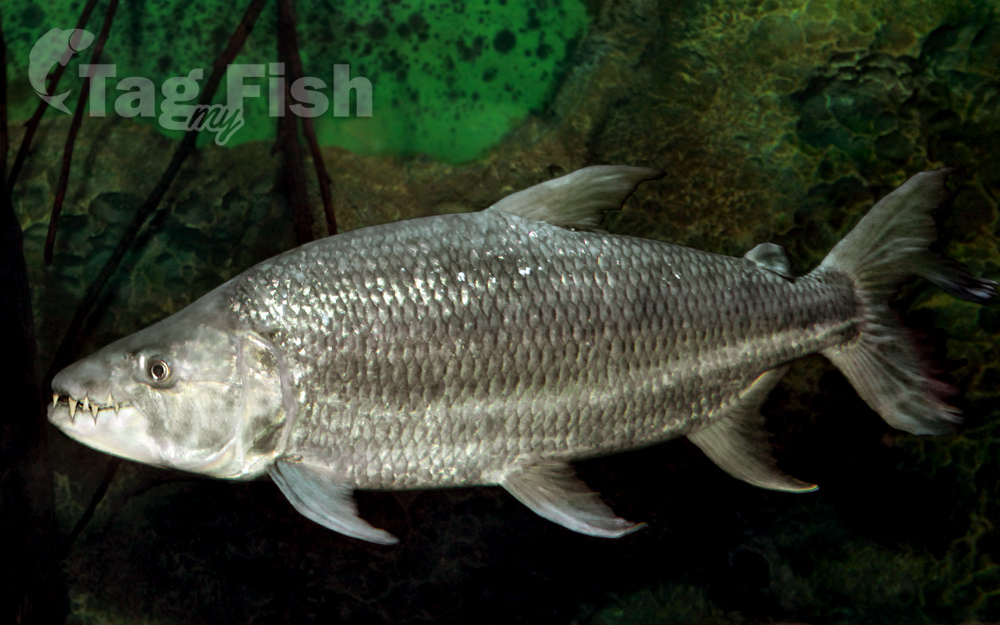Goliath tigerfish
(Hydrocynus goliath)

Classification
General data
Hydrocynus goliath, also known as the goliath tigerfish, giant tigerfish, or mbenga, is a very large African predatory freshwater fish of the family Alestidae.
Distribution
Hydrocynus goliath is found in the Congo River Basin (including Lualaba River and Lake Upemba), and Lake Tanganyika. A study published in 2011 revealed several mtDNA clades in this region, suggesting a higher tigerfish species richness than traditionally recognized. If confirmed, this would restrict H. goliath to the Congo River Basin. Four additional species (H. vittatus and three undescribed species) appear to be present in this Basin, while two (H. vittatus and an undescribed species) appear to be present in Lake Tanganyika.
Description
This large-toothed, highly predatory fish grows to an average length of 1.5 m (4.9 ft) and a weight of 50 kg (110 lb). Its teeth fit into distinct grooves along its jaws. On average each of its teeth can grow up to 2.5 cm (1 in), according to biologist and television presenter Jeremy Wade. The largest recorded specimen weighed 70 kg (154 lb).
Hydrocynus goliath is the largest member of the family Alestidae. Locals near the Congo River Basin call this species M’Benga, which means ’the dangerous fish’ in a Swahili dialect. This species lives only in the Congo basin.
Diet
Hydrocynus goliath is a piscivore, feeding on any fish it can overpower, including smaller conspecifics.
When hunting, this fish uses the calmer eddies of the rapids to ambush its prey, using its keen sight to detect prey. When a target is noticed, the fish accelerates to chase it down. The Nile crocodile is the only known predator of mature goliath tigerfish.











